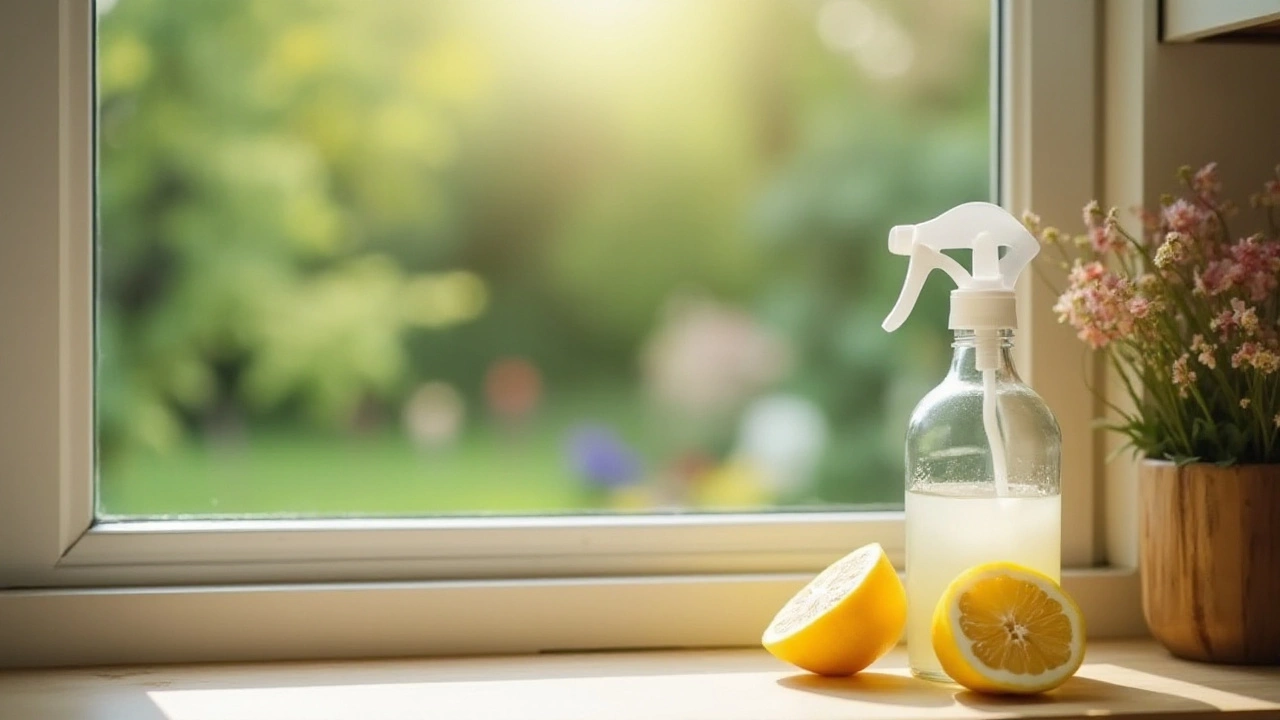Glass Cleaning Made Easy – Tips for Windows, Oven Doors & More
If you’re tired of staring at smudged windows or a greasy oven door, you’re not alone. A clear pane of glass looks great, but keeping it spotless can feel like a chore. The good news? You only need a few simple steps, the right tools, and a bit of know‑how to get glass shining without streaks.
Why Glass Gets Streaky and How to Stop It
Most streaks come from three things: leftover soap, hard water minerals, and wiping with the wrong cloth. When soap dries, it leaves a thin film that catches light and looks dull. Hard water leaves spots that are hard to see until the sun hits them. And cotton towels can re‑deposit lint, making a clean surface look dirty again. The trick is to use a low‑foam cleaner, rinse with clear water, and dry with a lint‑free material.
Home‑Friendly Recipes for Spotless Glass
You don’t need pricey spray bottles to get great results. Mix one part white vinegar with three parts distilled water in a spray bottle. Add a splash of rubbing alcohol for faster drying. For stubborn oven‑door stains, sprinkle baking soda on a damp cloth and gently rub before wiping with the vinegar mix. This combo breaks down grease, kills bacteria, and evaporates quickly, leaving no residue.
Start every cleaning session by removing loose dust. A soft brush or a dry microfiber cloth sweeps away dirt that would otherwise scratch the surface. For large windows, use a telescopic squeegee: pull the blade from top to bottom in a smooth motion, wiping the blade with a clean cloth after each pass.
When it comes to drying, skip paper towels. Old newspaper is cheap, lint‑free, and surprisingly effective at absorbing water without leaving streaks. Fold it into a pad, press it against the glass, and watch the moisture disappear. If you prefer a reusable option, a high‑quality microfiber cloth does the job just as well.
Cleaning an oven door glass needs a bit more attention. First, let the oven cool completely. Spray the vinegar solution on the glass and let it sit for a minute. Then sprinkle a thin layer of baking soda on the wet area and scrub with a non‑abrasive sponge. Rinse with a clean damp cloth and finish with a dry newspaper pad for a streak‑free finish.
For exterior windows, start at the top and work down to avoid dripping on clean areas. A garden hose can rinse away the initial grime before you apply the cleaning solution. If you live in a hard‑water area, add a teaspoon of lemon juice to the vinegar mix; the citric acid helps dissolve mineral deposits.
Prevent streaks by cleaning on a cloudy day or in a shaded spot. Direct sunlight makes the cleaner dry too fast, trapping residue before you can wipe it away. Also, avoid using too much liquid; a light mist is enough to wet the surface without flooding it.
If you still see spots after your best effort, it might be time to call in a pro. Professional window cleaners have commercial‑grade squeegees, purity‑filtered water, and the experience to tackle hard‑to‑reach panes safely. Fortis Cleaning Solutions offers eco‑friendly glass cleaning that respects both your home and the planet.
In short, glass cleaning isn’t magic—it’s just a few habits done right. Dust first, use a simple vinegar‑water mix, dry with lint‑free material, and keep an eye on water quality. Follow these steps and you’ll enjoy crystal‑clear windows and oven doors without spending hours or breaking the bank.

Crafting a DIY Window Cleaner to Sparkle Your Home
Creating a homemade window cleaner is a simple yet effective solution for maintaining sparkling, streak-free windows. With a few common household ingredients, such as vinegar and baking soda, you can craft a cleaner that not only saves money but is also eco-friendly. This do-it-yourself guide will offer tips for mixing ingredients, show you how to avoid common pitfalls, and provide insight into why these natural ingredients are highly effective. Discover the joy of achieving gleaming windows while caring for the environment.
Read More